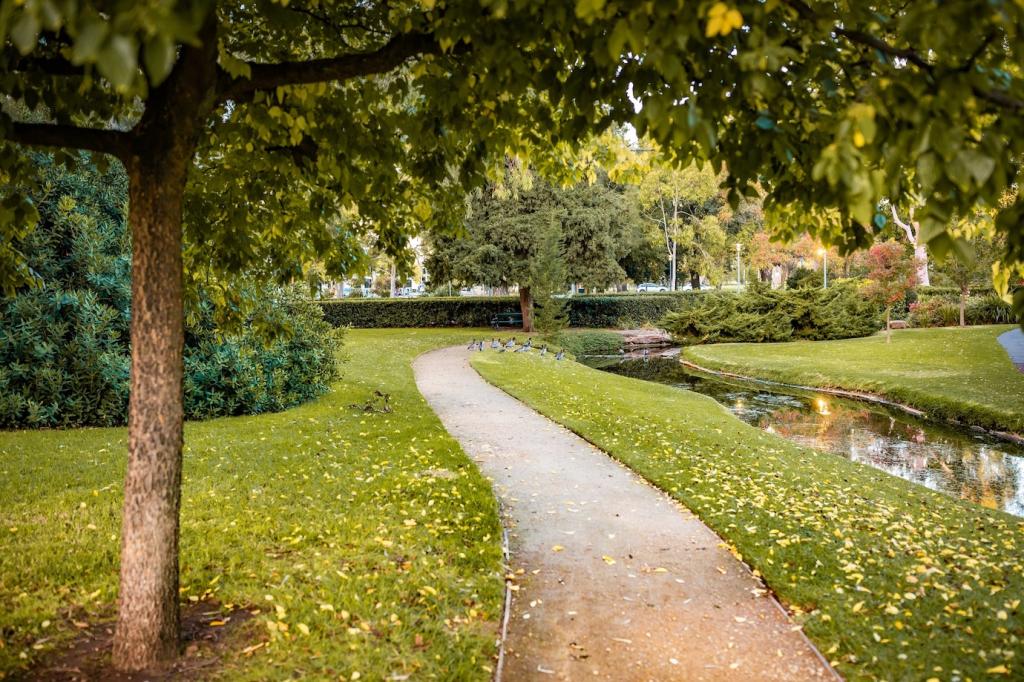
Incorporating Recycled Materials in Garden Design
Discover how recycled materials can transform your garden into a sustainable, creative, and eco-friendly retreat. This page explores key concepts, practical applications, and the many benefits of integrating reclaimed elements into your landscape, inspiring a new approach to garden design that’s as conscious as it is stylish.
Benefits of Recycled Materials in the Garden
01
Incorporating recycled items into your garden significantly reduces the consumption of new resources and decreases landfill waste. By reusing materials like old bricks, timber, or even glass, you actively participate in environmental conservation. This mindful approach minimizes your carbon footprint, as the energy and pollution associated with manufacturing new products are largely avoided. Over time, such conscious decisions contribute to healthier ecosystems, supporting biodiversity both within your garden and beyond.
02
Gardens that integrate reclaimed materials often boast an authentic charm and lived-in warmness that’s difficult to replicate with new products. Weathered doors become whimsical trellises, vintage windows transform into greenhouse panels, and salvaged tiles serve as intricate mosaic paths. Each item tells its own story, adding character and visual intrigue that evolve season after season. The juxtaposition of new plantings against aged surfaces creates dynamic compositions that captivate the eye and spark conversation among visitors.
03
Choosing recycled elements can drastically reduce your garden design expenses. Salvaged materials—often free or inexpensive—are readily available at demolition sites, local recycling centers, or online marketplaces. Not only does this allow for creative experimentation, but it also stretches your budget considerably further than if you relied solely on new products. For DIY enthusiasts, the money saved on materials can be invested in higher-quality plants or specialized tools, making your garden both beautiful and budget-friendly.
Planters from Unconventional Items
Everyday objects like tires, baskets, boots, and sinks can be transformed into unique planters that give new life to otherwise discarded items. By choosing hardy, weather-resistant containers and preparing proper drainage, you can accommodate a wide range of plant species. Personalized planters inject a sense of playfulness and nostalgia into your garden while reducing waste. The mix of unexpected shapes and textures also invites curiosity, encouraging exploration throughout the space.
Pathways and Borders with Salvaged Materials
Pathways composed of reused bricks, reclaimed wood, or broken concrete create eco-friendly routes that unify your garden’s design. Remnants from home renovations or construction can be repurposed into curving borders or geometric patterns, establishing both defined edges and visual rhythm. Utilizing various textures and colors from salvaged materials injects depth and personality into your landscape, making each pathway a tactile and aesthetic experience for anyone who walks through your garden.
Vertical Features and Trellises
Old ladders, metal bedframes, and bicycle wheels can all be ingeniously repurposed as vertical supports for climbing plants or decorative screens. These recycled elements not only maximize space within compact gardens but also serve as expressive structures that evolve as plants mature. Vertical features add architectural interest, direct movement through the garden, and provide essential habitats for beneficial wildlife such as birds and insects. The interplay of living foliage against reimagined materials fosters a harmonious blend of old and new.
Previous slide
Next slide
Design Principles for Recycled Gardens
When utilizing recycled materials, striking the right balance between visual appeal and practical purpose is crucial. Every item should be chosen with both its look and its intended function in mind. For instance, an old wooden pallet might become a vertical herb garden, while weathered stone can serve as a striking bench foundation. By considering proportions, shapes, and the interplay of textures, you create a garden that feels both artfully curated and highly usable for daily enjoyment.
Blending a variety of recycled materials without creating visual chaos relies on careful selection of color palettes and textures. Repeating patterns, hues, or finishes provide continuity, allowing disparate reclaimed objects to form a cohesive whole. For example, pairing metal pieces with similarly weathered finishes or combining remnants of colored glass for mosaic accents can unify the design language. This sense of harmony ensures your garden appears thoughtfully designed, rather than randomly assembled.
While recycled materials offer sustainability benefits, it’s essential to assess their durability and safety for outdoor use. Items should be structurally sound, free from harmful chemicals, and able to withstand local weather conditions. Treat wood for rot-resistance, sand down sharp edges on metal, and avoid materials containing lead or asbestos. Careful preparation extends the life of your garden features, providing peace of mind and ensuring a safe, inviting environment for people and pollinators alike.

